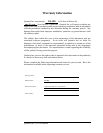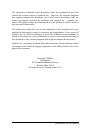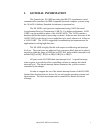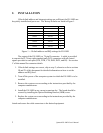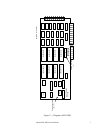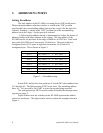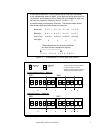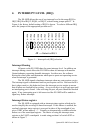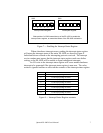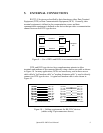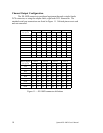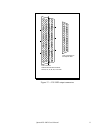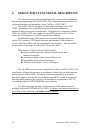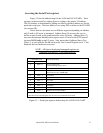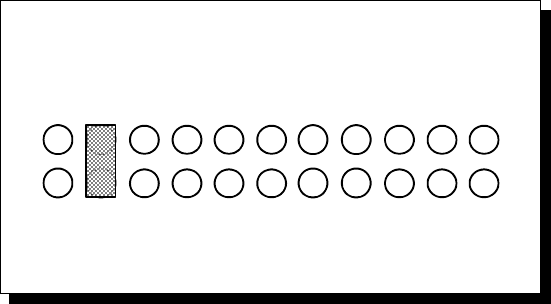
4. INTERRUPT LEVEL (IRQ)
The ES-100D allows the use of any interrupt level in the range IRQ2 to
IRQ7, IRQ10 to IRQ12, IRQ14, or IRQ15, selected using jumper pack J2. In
Figure 6, the factory default setting of IRQ3 is shown. To select a different IRQ,
move the jumper to the appropriate position on J2.
12
34567891011
IRQ7
IRQ2
IRQ3
IRQ4
IRQ5
IRQ6
IRQ11
IRQ12
IRQ14
IRQ15
IRQ10
13
14
15 16 17 18 19 20 21 22
12
Default is IRQ 3
---
J2
Figure 6 --- Interrupt level (IRQ) selection
Interrupt Sharing
All ports on the ES-100D share the same interrupt level. In addition, an
interrupt sharing circuit allows the ES-100D to share its interrupt with another
Quatech adapter supporting sharable interrupts. In either case, the software
driving the serial ports must determine which port or ports are requesting service
when an interrupt is generated.
The ES-100D signals a hardware interrupt when any port requires service.
The interrupt signal is maintained until no port requires service. Because the ISA
bus is edge-sensitive, this behavior forces the interrupt service routine to ensure
that all ports are checked before exiting. A way to do this is to poll each port until
an interrupting port is found. After servicing the port, all ports should be checked
again. If any interrupting port is left unserviced the ES-100D will be unable to
signal any further interrupts.
Interrupt Status register
The ES-100D is equipped with an interrupt status register which can be
used to simplify the servicing of shared interrupts. If this feature is enabled, the
read-only interrupt status register is accessed in place of the scratchpad of any
given UART at base address + 7. Virtually no commercially available software
makes use of the scratchpad register. The choice of using the interrupt status
register or the UART scratchpads is made using position 6 of switch SW2 as
shown in Figure 7.
6
Quatech ES-100D User's Manual



